Pascal
Modal showing image
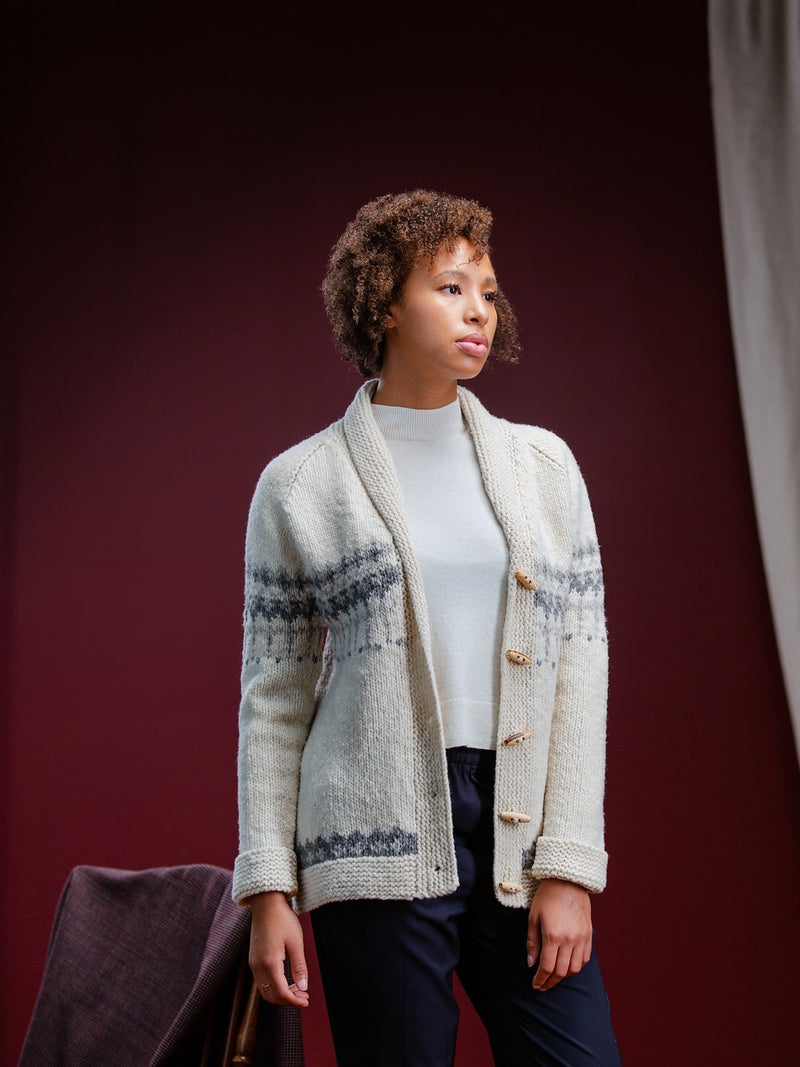
Modal showing image

Modal showing image

Modal showing image
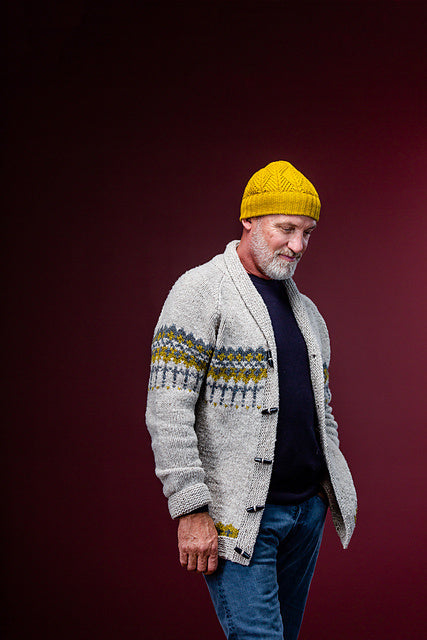
Modal showing image
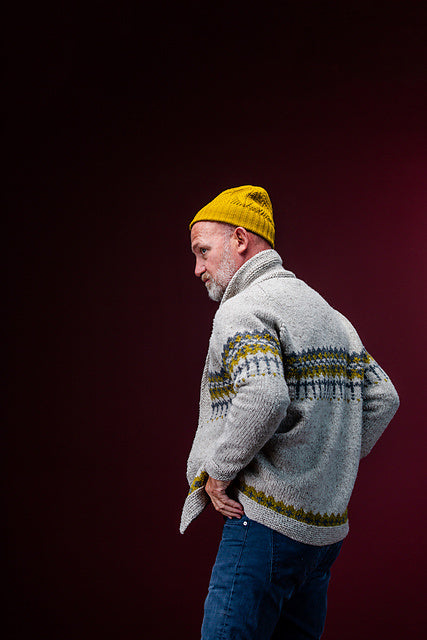
Modal showing image

Modal showing image

Modal showing image
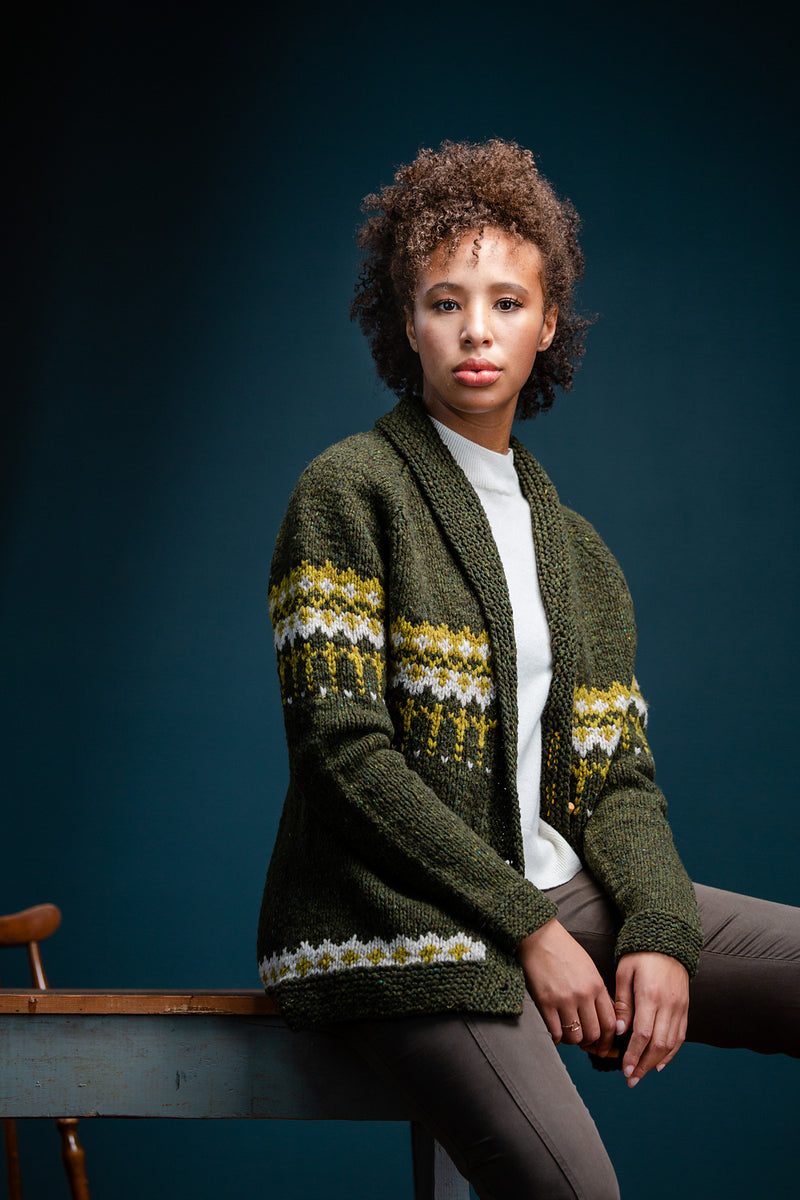
Modal showing image
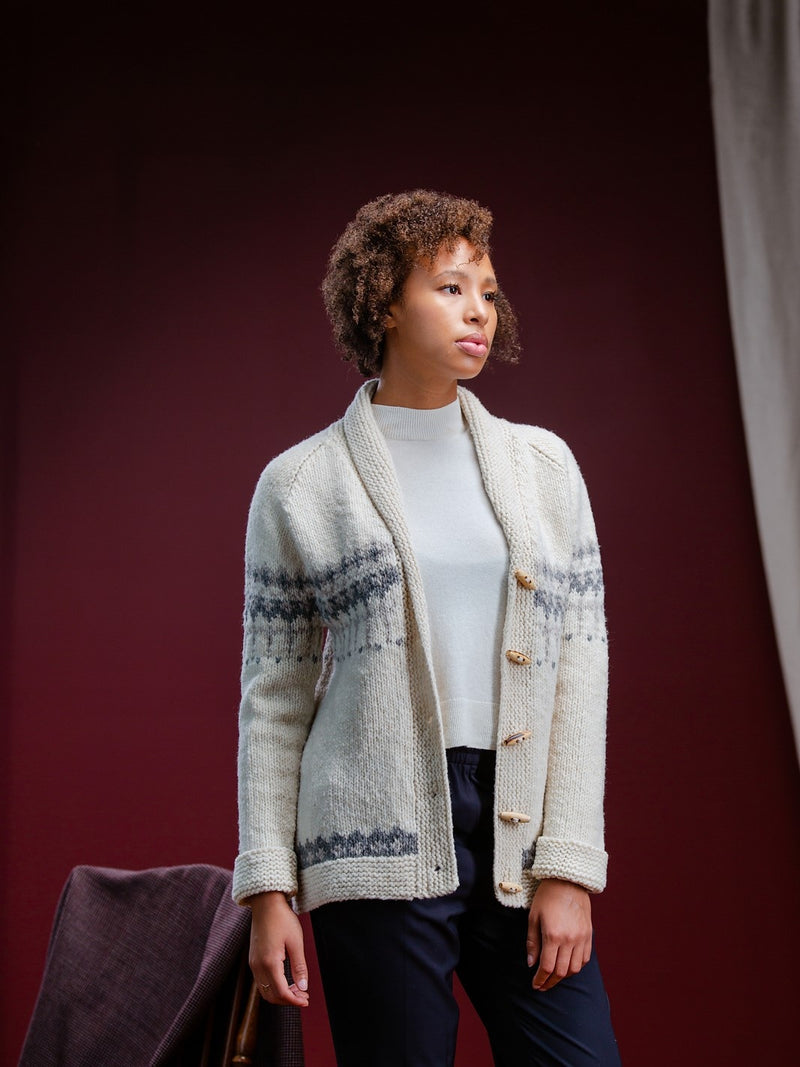
This pattern is available on Ravelry.
by Gudrun Johnston
Garter stitch, colorwork, and Quarry — surely few can beat the Pascal Cardigan in feats of coziness. Pascal features a woodsy three-color motif that is enjoyable for stranded colorwork knitters of all levels — chunky, woolen-spun Quarry makes this cardigan an especially approachable project for those new to steeking. Seamless raglan construction from the bottom up makes Pascal additionally well suited to act as an adventurous guide into the wonderful world of garment knitting.
Construction
The body and sleeves are worked circularly from the bottom up and joined at the underarms, then the yoke is worked in the round. Both the body and the yoke are shaped using Short Rows: Wrap and Turn Method. A steek is used to create the front opening. The center front steek is secured and then cut open before picking up stitches along the front and back neck edges for the collar/band piece. After the collar/band is worked, the steek is neatly tacked to the WS of the garment, either with yarn or sewing thread.
Yarn
Brooklyn Tweed Quarry (100% American Targhee-Columbia wool; 200 yards/100 grams)
Version I (Shaped):
- (6, 6, 7, 7*, 8, 9) skeins of Main Color (MC)
- 1 skein of Color 1 (C1)
- 1 skein of Color 2 (C2)
- Version I sample I photographed in colors Serpentine (MC), Sandstone (C1), and Citrine (C2)
- Version I sample II photographed in colors Gypsum (MC), Granite (C1), and Sandstone (C2)
*Version I fourth size uses almost all of seven skeins. You may wish to consider purchasing an extra skein for safety due to variations in individual work.
Version II (Classic):
- (6, 6, 7, 8, 9, 9) skeins of Main Color (MC)
- 1 skein of Color 1 (C1)
- 1 skein of Color 2 (C2)
- Version II sample I photographed in colors Lazulite (MC), Flint (C1), and Granite (C2)
- Version II sample II photographed in colors Sandstone (MC), Citrine (C1), and Slate (C2)
Yardage
Chunky weight wool yarn in the following approximate amounts:
Version I (Shaped):
- (1025, 1135, 1275, 1400, 1550, 1675) yards MC
- (90, 100, 110, 115, 125, 130) yards C1
- (105, 120, 130, 140, 150, 160) yards C2
Version II (Classic):
- (1060, 1195, 1335, 1470, 1615, 1740) yards MC
- (90, 100, 110, 115, 125, 130) yards C1
- (105, 120, 130, 140, 150, 160) yards C2
Gauge
- 14 stitches & 22 rounds = 4” in stockinette stitch with Size A needle(s), after blocking
- 14 stitches & 20 rounds = 4” in chart patterns with Size B needle(s), after blocking
Note: Correct length of the one-piece yoke is dependent upon achieving the stated round gauges. 14 stitches & 32 rows = 4” in garter stitch with Size C needle(s), after blocking
Needles
Size A (for Single-Color Stockinette Stitch)
- One each 16” and 32” circular needles and one set of double-pointed needles (DPNs)* in size needed to obtain gauge listed
- Suggested Size: 6 mm (US 10)
Size B (for Chart Patterns)
- One 32” circular needle and one set of DPNs*, one size larger than Size A
- Suggested Size: 6.5 mm (US 10½)
Due to significant variance among knitters, your colorwork fabric should be swatched and wet-blocked prior to knitting your sweater to determine whether Size B should be larger, smaller, or equal to Size A. We recommend trying Speed-Swatching for Circular Knitting.
Size C (for Garter
